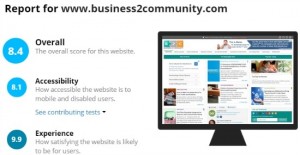
Roughly one-third of the U.S. workforce—52 million people—earn less than $15 an hour, according to a new report from anti-poverty advocacy group Oxfam America. And these workers, whose annual pay comes to less than $31,200 a year, are disproportionately not white men, the group found.
“Women and people of color do much more than their fair share of low-wage jobs, and as wages lose value, it’s becoming a civil rights crisis in this country,” the group said, adding that “these workers provide some of the most essential services in the country . . . [They] care for our loved ones, transport and harvest our food, stock our shelves, and deliver our packages.”
That women and people of color disproportionately comprise America’s lower-wage workforce is hardly news. But Oxfam’s statistics, drawn from the U.S. Census Bureau’s annual American Community Survey data, puts this divide in new, sharper relief: While 25% American working men earn less than $15, for women it jumps to 40%. And while 26% of white workers earn less than $15, among Hispanic/Latinx workers it increases to 46%, and among Black workers it’s 47%.
Combine gender and race, and the gap climbs even higher: Half of working women of color earn less than $15 nationwide. This number rises more than 60% in 18 different states, according to Oxfam’s data.
Oxfam’s data also show that 89% of workers earning a sub-$15 wage are age 20 or older, again complicating the common argument against raising the minimum wage that assumes most low-wage earners are kids. More than half of working single parents—57% (that’s 11.2 million)—also fall into this lowest-paid category. Oxfam created a set of interactive maps that plot the share of workers who are making under $15 by state, sorted by gender, race, age, and parenthood status.
[See more: Oxfam’s interactive maps shows how much workers earn in your state, broken down by age, race, and gender, and family status.]
The report comes at a moment when wages are not growing, but corporate profits sure are, and inflation is at a record high. Everything from electricity to medical care is more expensive today than it was before the pandemic. A separate report published last week by the Urban Institute details how wages have remained stagnant, even as rent, groceries, car prices, gas, healthcare, and other staples have gone up by as much as 40% in recent months.
A decade after labor activists began pushing for a $15 hourly wage, and a few years since some states began passing laws to enshrine $15 as their new minimum wage, it might be tempting to believe this wage is more prevalent than it is and goes further than it actually does. Right now, only California and D.C. have a $15 wage floor. Nearly a dozen states are phasing theirs in but won’t hit the $15 benchmark until, in some cases, the year 2025. Meanwhile, nearly 20 states still use the federal minimum wage, unchanged since 2009, of $7.25 an hour.
According to the Economic Policy Institute’s Minimum Wage Tracker, only 12 states currently have a minimum wage above $12.50. And as the price of goods and services keeps climbing, even $15 an hour isn’t good enough. EPI says a worker needs to earn at least $14.50 an hour to cover the cost of living in America’s most affordable county (Orangeburg, South Carolina). For cities like San Francisco, New York, and even Seattle, it goes as high as $23.
(54)
Report Post







